Planting Methods and Propagation of Flowers--Bamboo Cypress
Potted bamboo and cypress, evergreen all the year round, thick green leaves, graceful posture, can give out wisps of fragrant smell, with air purification and mosquito repellent effect, but also extremely shade-resistant, very suitable for meeting places, gardens and indoor furnishings, is one of the increasingly popular potted flowers and trees. So how are bamboo and cypresses raised? Is there any good method in breeding? What matters do we need to pay attention to in breeding bamboo and cypress? Please read on with me with questions.
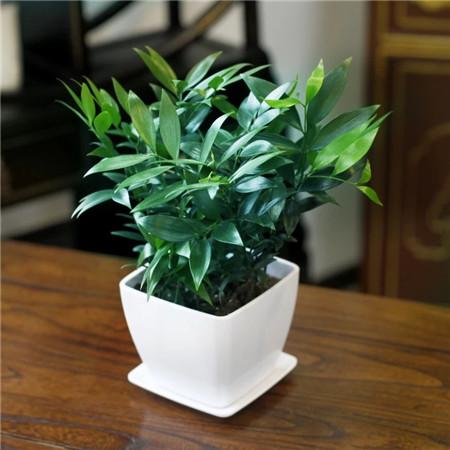
The culture method of bamboo and cypress (basic knowledge):
The best breeding time: bamboo and cypress should be propagated in late spring and early autumn.
The best growing soil: it is suitable for bamboo and cypress to use loose, moist, thick humus layer and acidic sandy loam soil to light clay.
Growth humidity requirements: bamboo and cypress often spray water to the leaf surface and around the plant to increase air humidity, make the leaf color thick green and bright, and prevent the leaf edge from drying up due to air dryness.
The best growth temperature: the most suitable annual average temperature of bamboo and cypress is 18-26 ℃.
The best growth light: bamboo and cypress in the sunny slope, the root neck will sunburn or die. The annual light can be illuminated at 500 to 800 hours, and the natural regeneration is good under the canopy.
Cymbal
Points for attention in culturing bamboo and cypress:
Fertilizer application: bamboo and cypress potted plants do not need to grow too fast, so they generally do not need additional fertilization, but in order to ensure that the leaves are dark green, alum fertilizer can be applied two or three times in the peak growing season.
Watering key points: keep the basin soil moist during the growing period of bamboo and cypress without stagnant water, too drought and stagnant water are not conducive to the normal growth of plants.
Pruning essentials: bamboo and cypress plants enter dormancy or semi-dormancy period in winter, and cut off branches such as thin, disease and insect pests, withered and overdense branches. The branches can also be arranged in combination with cuttings.
Pot soil replacement: as long as bamboo and cypress are properly maintained, it will grow very fast. when it grows to a certain size, it should be considered to change a larger basin to allow it to continue to grow vigorously. The culture soil and composition ratio for basin change can be selected as follows: vegetable garden soil: slag = 3RU 1; orchard soil: medium coarse river sand: sawdust = 4RU 1RU 2; or one of paddy soil, pond mud, rotten leaf soil.
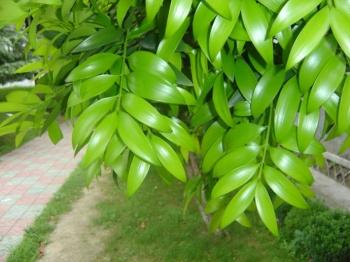
Main points of propagation: bamboo and cypress are often propagated by sowing, cutting, striping and so on.
1. Sowing: seeds can be sowed with picking in the greenhouse or sown in the open field in spring. After sowing, the soil was two or three centimeters thick and covered with straw or weeds. After 20 days, the seeds began to germinate. After that, the covering was gradually removed and the seedlings emerged in 30 to 50 days. Seedlings due to imperfect root development, stagnant water, torrential rain, high temperature, exposure and so on will cause their death, so the usual management should be extra careful.
2. Cuttage: generally carried out in March, or in mid-September. Cut the current or annual twigs as cuttings and cut off some leaves to reduce water evaporation and ensure survival. Rooting powder and other drugs can also be used to promote rooting. Insert in coarse sand, vermiculite or other media with good drainage and permeability, insert rear service watering, spray water frequently, keep the medium and air moist, avoid hot sun exposure, the survival rate is quite high.
3. Striping: the method of high-altitude crimping is often used. Select strong and full annual branches in the growing season, cut them in the right place, then wrap the soil in the wound, wrap the soil tightly in a plastic bag, keep it moist, cut off and plant in a pot after rooting.
Pest control:
1. Bamboo and cypress pests are: aphids, control with 50% aldicarb 3000 × 5000 times or 40% omethoate 1500× 2000 times; scale, control, fenitrothion 2000 times, 1605 times 1500 times; leaf moths, dichlorvos or fenitrothion 1000-1500 times or 90% trichlorfon 1500 times.
2. Prevention and control of bamboo diseases: black spot, spraying 40% carbendazim 800 times or 65% Dysen zinc 400-500 times in early June; rust powder, 500 times 500 times of carbendazim 2000 times or 65% zinc wettable powder 500 times; powdery mildew, 50% carbendazim wettable powder 1000 times 1500 times; anthracnose, coal fouling, carbendazim 800 times or low concentration of carbendazim.
3. Prevention and treatment of element deficiency: it can be prevented by pouring into the rock crevice or spraying trace fertilizer on the leaf surface.
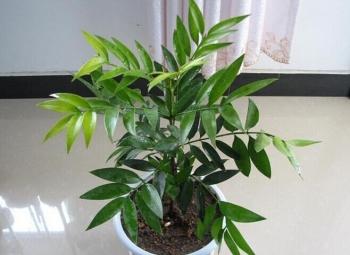
Cymbal
Experience of culturing bamboo and cypress:
1. Keep the indoor light bright in winter, control watering, no less than 0 ℃ can safely survive the winter.
2. When planting, refer to the production method of bamboo bonsai, pay attention to the scattered height and the left and right position, make it dense, elegant and elegant, and spread a layer of stone or moss on the surface of the potted soil to increase appreciation.
- Prev
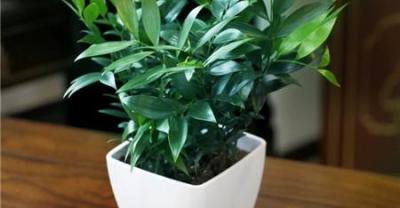
Planting density of fruit trees and fertilization techniques in autumn
Autumn is the harvest season for fruit trees, when farmers are busy harvesting and listing, but don't forget to fertilize. Autumn is a very important fertilization period for fruit trees.
- Next
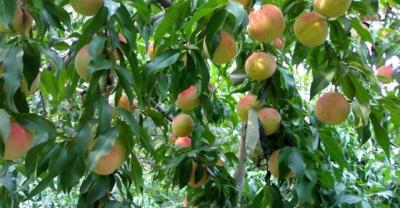
Planting technique of Cuihong Tomato in greenhouse
1. Sowing and raising seedlings 1. Sowing date: it is appropriate for Qujiang greenhouse to sow seeds in winter and spring from mid-September to early October, and harvest can begin in early February and end at the beginning of June.
Related
- Fuxing push coffee new agricultural production and marketing class: lack of small-scale processing plants
- Jujube rice field leisure farm deep ploughing Yilan for five years to create a space for organic food and play
- Nongyu Farm-A trial of organic papaya for brave women with advanced technology
- Four points for attention in the prevention and control of diseases and insect pests of edible fungi
- How to add nutrient solution to Edible Fungi
- Is there any good way to control edible fungus mites?
- Open Inoculation Technology of Edible Fungi
- Is there any clever way to use fertilizer for edible fungus in winter?
- What agents are used to kill the pathogens of edible fungi in the mushroom shed?
- Rapid drying of Edible Fungi

